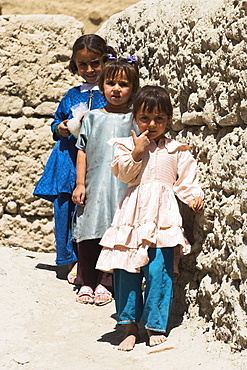Results
10 results found
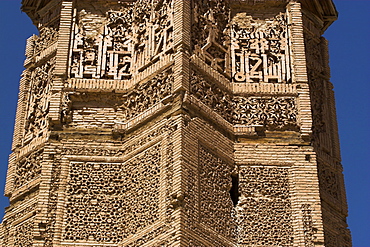
One of two early 12th century minarets built by Sultan Mas'ud 111 and Bahram Shah, that served as models for the Minaret of Jam, decorated with square Kufic and Noshki script, Ghazni, Afghanistan, Asia
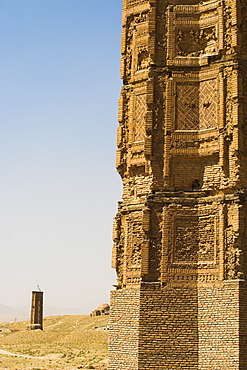
Two early 12th century minarets built by Sultan Mas'ud 111 and Bahram Shah that served as models for the Minaret of Jam, Ghazni, Afghanistan, Asia
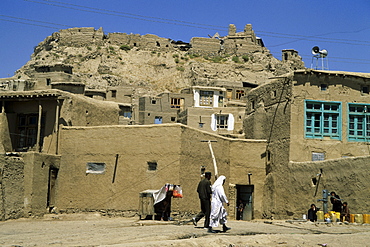
Houses within the old city walls below the Citadel, rebuilt since its destruction in the First Anglo Afghan war as used as a military garrison, Ghazni, Afghanistan, Asia
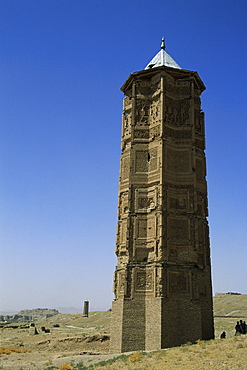
The minaret of Bahram Shah, one of two minarets built by Sultan Mas'ud III and Bahram Shah with square Kufic and Noshki script, that served as models for the minaret of Jam, and believed to have originally been part of mosques, Ghazni, Afghanistan, Asia
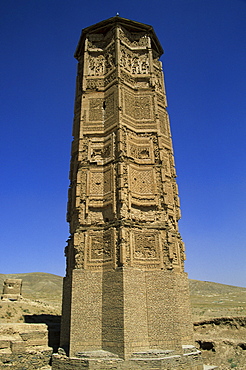
The minaret of Sultan Mas'ud III, one of two minarets built by Sultan Mas'ud III and Bahram Shah with square Kufic and Noshki script, that served as models for the minaret of Jam, and believed to have originally been part of mosques, Ghazni, Afghanistan, Asia
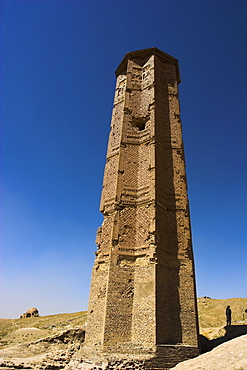
Man looking at Minaret of Bahram Shah one of two early 12th century minarets, Ghazni, Afghanistan, Asia
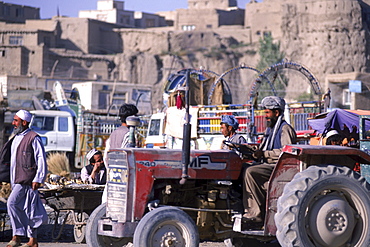
A tractor drives through a bustling market that flourishes below the old city walls in the town of Ghazni, Afghanistan.
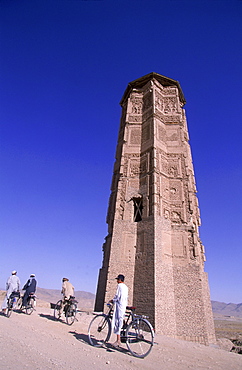
Men and boys on bikes ride past a towering, ancient minaret, outside of Ghazni, Afghanistan, October 1, 2002. Made of brick decorated with Kufic and Naksh Script and floral motifs, the minaret dates back to the early 12th century and was built by Sultan Masud III of the Ghaznavid Dynasty, who ruled over an empire encompassing much of Afghanistan, Northern India, Persia and Central Asia. The minaret was once three times as tall as its current 70 feet, and is thought to have been part of a large mosque complex. Now an important truck stop on the road to Kandahar, Ghazni, located on the Lora River at the elevation of 2,225 meters, is the capital of Ghazni province and is a market for sheep, wool, camel hair cloth, corn, and fruit-it also continues to be a haven for Taliban insurgents.

Afghan men pause on the road with an ancient brick minaret and many shrines in the background, outside of Ghazni, Afghanistan, October 1, 2002. Made of brick decorated with Kufic and Naksh Script and floral motifs, the minaret dates back to the early 12th century and was built by Sultan Masud III of the Ghaznavid Dynasty, who ruled over an empire encompassing much of Afghanistan, Northern India, Persia and Central Asia. The minaret was once three times as tall as its current 70 feet, and is thought to have been part of a large mosque complex. Now an important truck stop on the road to Kandahar, Ghazni, located on the Lora River at the elevation of 2,225 meters, is the capital of Ghazni province with a population of 35,900, and is a market for sheep, wool, camel hair cloth, corn, and fruit, and continues to be a haven for Taliban insurgents.

Men on bikes ride past an ancient brick minaret toward the old walls and citadel of the town of Ghazni, Afghanistan, October 1, 2002. Made of brick decorated with Kufic and Naksh Script and floral motifs, the minaret dates back to the early 12th century and was built by Sultan Masud III of the Ghaznavid Dynasty, who ruled over an empire encompassing much of Afghanistan, Northern India, Persia and Central Asia. The minaret was once three times as tall as its current 70 feet, and is thought to have been part of a large mosque complex. Now an important truck stop on the road to Kandahar, Ghazni, located on the Lora River at the elevation of 2,225 meters, is the capital of Ghazni province with a population of 35,900, and is a market for sheep, wool, camel hair cloth, corn, and fruit.



